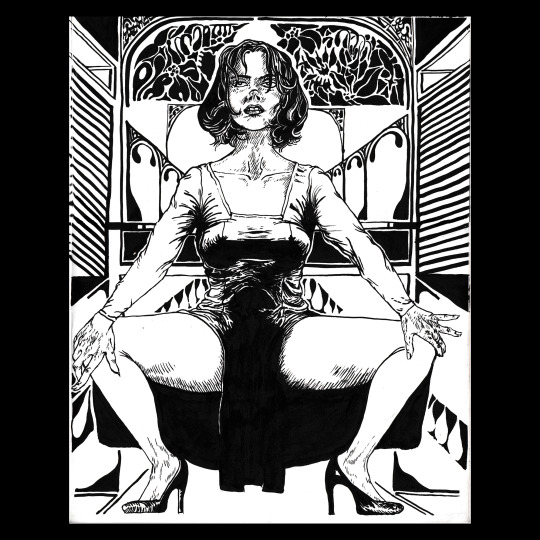#poseme
Photo
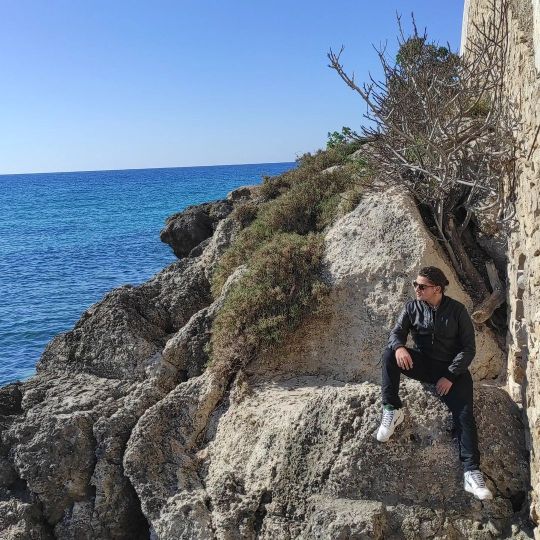
Selfie in relax vicino al mare. . . . . . . . . . . . #viral #portrait #port #fashiononthesea #normaldresses #sexymanuel #look❤️ #styleblogger #poseme #posesforpictures #styleoftheday #happylife #modernmen #modernmenstreetstyle #menfashionstyle #menfashionpost #menfashiontips #selfie #portraitphotography https://www.instagram.com/p/Co2C9wOqxXs/?igshid=NGJjMDIxMWI=
#viral#portrait#port#fashiononthesea#normaldresses#sexymanuel#look❤️#styleblogger#poseme#posesforpictures#styleoftheday#happylife#modernmen#modernmenstreetstyle#menfashionstyle#menfashionpost#menfashiontips#selfie#portraitphotography
8 notes
·
View notes
Text
ok now the singleminded focus has worn off its bed time. gnight
#i made a whole gif!!!! :D#poseme was crucial i needed refs for every frame#ok sleepy time its really early in the morning now
1 note
·
View note
Text
A newspaper in my country has interviewed Siddharth Kara, one of the experts on what's going on in the cobalt mines in Congo. I think it's very well explained and a must-read to get an overview of this huge human rights violation that is going on. So here I translate it to English, hoping it will reach more people.
Siddharth Kara: "Every time we buy a new mobile phone, we put our foot around the neck of a child in the Congo"
Interview with the author of Cobalt Red: How the Blood of the Congo Powers Our Lives
"The poorest people in the world, including tens of thousands of children, dig the earth in toxic and very dangerous conditions to find cobalt," says journalist and writer Siddharth Kara (Knoxville, Tennessee, USA, 1974). The rechargeable batteries of our mobile phones, tablets, laptops or electric vehicles need this mineral that thousands of children, men, women and elderly people extract from the Congolese mines in inhumane conditions. Kara went there because he had specialized in research on slavery, and in Congo he found a modernized form of slavery. "Time has passed, but the colonial mentality has not," he explains. Everything he saw there and what was explained to him is recounted in Cobalt Red: How the Blood of the Congo Powers Our Lives (a book that does not have a translation into Catalan, but which has now been translated into Spanish, by Capitán Swing). The photographs and videos illustrating this interview were taken by himself.
—Was it difficult to write this book?
—Yes. Firstly, because of the specific difficulty of this area of the Congo: very dangerous, very militarized. There are armed militias. And for the local people there it is dangerous to talk to foreigners, because it can bring them consequences. It was difficult to get there, and then it was difficult to build trust with the people who worked there. I only managed it thanks to this trust, which we achieved little by little, until we were sure that we could do the research with guarantees and ethically.
—What drove you to the Congo cobalt mines?
—I had been doing research on slavery since 2000. Around 2016, some African colleagues contacted me and said: “Siddharth, something terrible is happening in the cobalt mines of the Congo, maybe you should go there”. I had no idea what cobalt was. I thought it was a color used for painting. I didn't know it was used for rechargeable batteries. It took me a couple of years to grasp its importance. Then I started making contacts to travel there, and in the summer of 2018 I went there.
—And what did you find there?
—The suffering and degradation I saw there were so intense that I decided to return there often to write a book. Hundreds of thousands of the world's poorest people, including tens of thousands of children, dig the earth in toxic and very dangerous conditions to find cobalt and put it into circulation, in a distribution chain that goes to the rechargeable devices and cars that people like you and me use every day. It was a human apocalypse, a total invasion of human rights and the dignity of the Congolese people.
—Could you describe what a mine like this is like, physically? How should we imagine it?
—Those who are at the top of the economic chain of cobalt exploitation like to distort the truth, and use the term "artisanal mine". This way, they evoke a kind of picturesque activity, but on the ground it is a dangerous and degrading job. A mine of this kind is a mass of tunnels, pits and trenches filled with thousands of people who dig with shovels, pieces of metal or directly with their bare hands. They fill a sack with earth, stone and mud. Some children rinse it in toxic pools to separate the mud from the cobalt stones, which a whole family pours into another sack. It might take twelve hours to fill a forty-kilo sack or two. For each sack they get paid a few euros, very few, and that's how they live every day. They survive.
This video was filmed by Siddharth Kara: [you can watch the video in the interview link, freely available without any paywall, here]
—Is there any rational organization in these mines? Is there someone who decides who does what to optimize work?
—Well, there is a whole gear designed so that the poor and the children of the Congo produce hundreds of thousands of tons of cobalt every year. There, work is usually divided by age and gender. Digging tunnels, which requires a lot of strength, is usually done by young men and teenagers. The digging of small pits and trenches that can be less meters deep is done by women and smaller children. Rinsing this toxic cobalt is usually done by the children. The merchant system to exploit these families and sell the cobalt they produce to the formal industrial mines is very well set up.
—What else do these people at the top of the chain invent?
—Another fiction they invent is that there is a difference between industrial and artisanal mining, and that they only buy from the industrial one, where there is no child labor. Not true: all cobalt is mined by children. All the cobalt that the children and peasants extract goes straight to industrial mining. In addition, there is no way to separate what comes from a bulldozer and what comes from a child, once it all pours into the same place in the facility that does the industrial processing before this cobalt is sent out of the Congo.
—You explain that the situation is particularly abusive for women.
—Yes. It is a lawless land, and violence is the norm. Women and girls always bear the brunt: they are victims of physical and sexual violence, and almost no one talks about it. It is a major tragedy: they are victims of sexual assaults that are committed in the mines themselves, while they collect the cobalt that we have in our mobile phones.
—You refer to all of this as a new episode of slavery. It is not the first time that the Congo has a decisive material for Western economic development. It happened with uranium for nuclear bombs, for example. History repeats itself.
—Exactly. It is important for people to understand that we are not witnessing an isolated case, but the latest episode in a long, very long, history of looting of the Congo, a very resource-rich country, dating back to the colonial period. The first automobile revolution required rubber for tires. The Congo had one of the largest rubber tree rainforests in the world. King Leopold [of Belgium] deployed a mercenary army of criminals and terrorists to enslave the population and make them work to get it. This inspired Joseph Conrad's novel Heart of Darkness. The Congo also has abundant reserves of gold, diamonds, nickel, lithium and other metals and minerals that make components for electronic devices…
—These mercenaries deployed by King Leopold, are they still there today, in one way or another?
—Yes. On the ground there are militias, or the army, or private security forces that the mining companies hire and that, sometimes, in addition to monitoring, do the work of recruiting children. Under the threat of an occupation, they force an entire town to dig. It's atrocious: we live in an age of supposed moral progress, where everyone shares the same human rights, and yet our global economic order has its knee on the necks of the children and the poor of the Congo, with this huge demand for cobalt that has to fuel the rechargeable economy.
—Has no Western country or international body done anything to stop it?
—No. No western country, no government, no big business has lifted a finger to address this tragedy. They talk about maintaining human rights standards in their supply chains, they talk about environmental sustainability, but it's only talk. That is why it is very important that journalists and researchers set foot on the land of the Congo and listen to what the Congolese have to say: that no one protects their rights or their dignity, that they are erasing the environment, that mining it is not done in a sustainable way and the whole countryside is polluted and destroyed by the mining operations. It is enough to walk ten minutes around a mine to see it.
—Does the same happen in all mines? Large Western companies that use cobalt often claim that theirs comes from artisanal mines that meet standards.
—Have they gone there? There is no decent mine in the Congo. It does not exist. I'll be happy to take any CEO of any tech company to their mines, where their cobalt comes from. We'll stand there, watching them extract it, and take a selfie with it. Everyone will realize that what is seen behind us is not decent. You will see destruction, millions of trees felled, installations that emit toxic gases that fall on the surrounding towns, on the children, on the animals, on the food. There is no decent mine in the Congo. And they know it. But who will believe the voice of a Congolese if they can drown it out with proclamations of human rights while they continue to make money without measure?
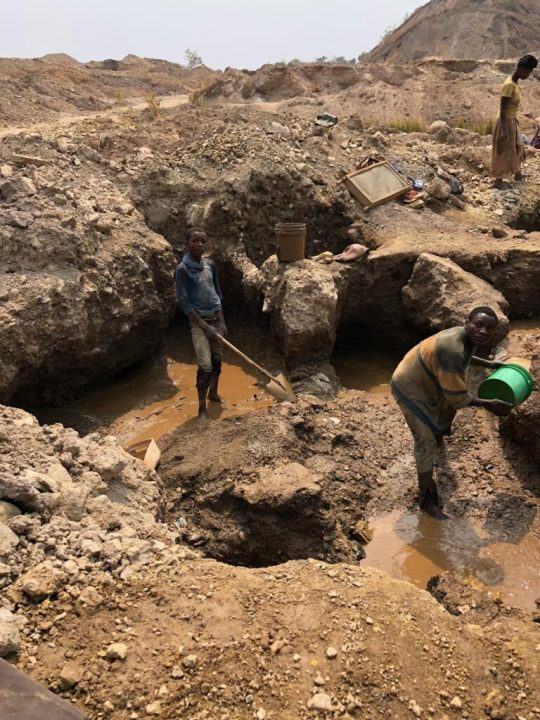


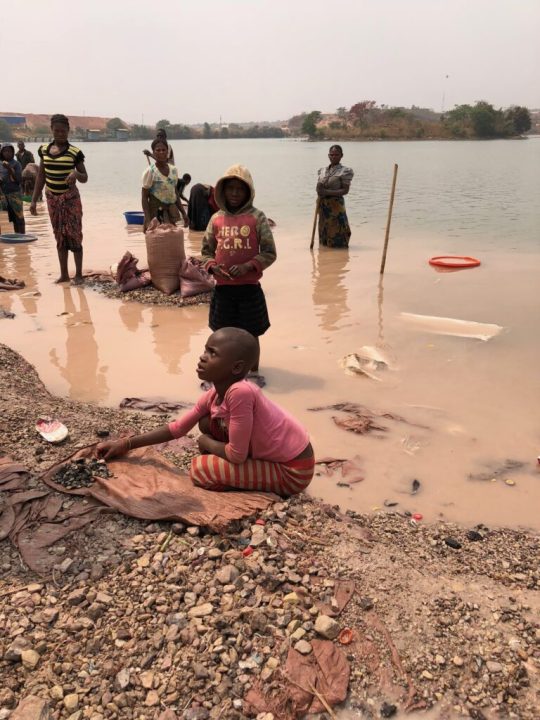
—Can you explain the role China plays in all of this? You say that it controls the supply chain.
—Yes. China controls about 70% of mining production in the Congo. Why do we accept China saying its mines are decent, if they don't even protect the human rights of their own people? Why do we accept a technology company or a car manufacturer saying, "My Chinese partners say they protect human rights there, and that's enough for me"? Why do we accept it?
—Why do you say that a certain transition to green energy is absolute hypocrisy?
—When the calls in favor of this transition consist of proposing to consumers that they buy electric vehicles instead of gasoline cars, this is hypocrisy. Because the cobalt and other elements that are used for the batteries of these cars are extracted using methods that are catastrophic for the environment. While in one part of the world we say we want to save the environment and leave a greener planet to our children, in another we are destroying both the planet and the future of their children. How can you save only part of the planet, turning the rest into a toxic dump? How can we give a green planet only to our children, while we let other people's children die? This is hypocritical.
—It is a reflection of the domination that the global north maintains over the south.
—We have never given Congo the opportunity to benefit from its own resources. It is a colonial mentality: time has passed, but the colonial mentality has not. It is the same type of colonial plunder from a century and a half ago. It is colonial to say: "Look, we need this, they have it, we take it from them in any way and, when we no longer need it, we leave a catastrophe behind us". There are companies that, recently, have started to pretend that they are becoming aware of this and promised that they would try to use batteries that did not have cobalt, but in reality they said: "Well, we've been caught, we'll look for another mechanism". And they do nothing to solve the catastrophe. Even if we no longer needed cobalt tomorrow, we would have to repair the destruction we have caused these past fifteen years.
—It's the big companies who should be required to react, but what do you think a Western consumer who has gotten upset reading you could do?
—The first step to progress in the conquest of human rights is always to make injustice known. Contribute to make everyone knows. Most people are good and, in their hearts, want no part of injustice. It is the few who move based on avarice and greed who pollute the rest of humanity. Outreach and awareness is the first step because it will inevitably activate a lot of people. Change always starts like this. In the case of cobalt, the second step is to think about our consumption habits. Every twelve months, the technology company I bought my phone from offers me a new one. Do I really need it? Every time we buy a new mobile phone, we put our foot on the neck of a child in the Congo. Better think twice, then.
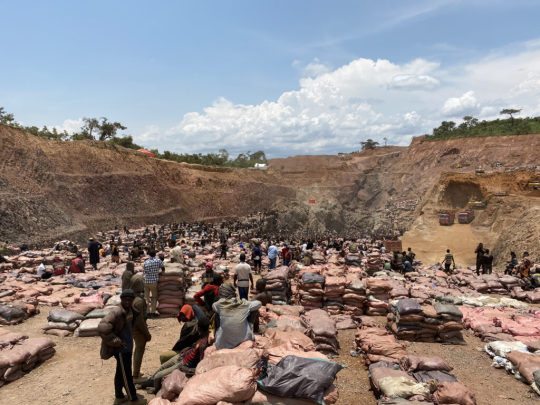
#congo#human rights#electric vehicles#electric cars#colonialism#labour rights#china#environmentalism#rape culture#feminism#slavery#africa#cobalt#labor rights#anti racism#free congo#siddharth kara#childrens rights#history#💬
178 notes
·
View notes
Text
Sota, Cavall i Rei
Sota, Cavall i Rei
És un article molt interessant, l'article parla de la IA (Intel·ligència Artificial) i com el seu avanç implicara molts canvis. En l'article parle de com la Intel·ligència Artificial pot emmagatzemar moltíssimes dades i com amb elles pot sabre tot sobre nosaltres, jo crec que no hauríem de permetre que la IA puga sabre tot sobre nosaltres, però tampoc podem parar el desenvolupament d'una cosa que no podem parar. A més també es qüestione de qui podria ser el rei i diu que són les preguntes, però en realitat qui formule les preguntes? Exacte les persones, és per això que de moment la podem controlar, però mai se sap, el que vull expressar, és que la intel·ligència podria desenvolupar-se i millorar-se fins a un punt que nosaltres les persones no podríem fer res, però ignorant els pensaments apocalíptics crec que ens podrà ajudar en molts conceptes, però tot el que pot afavorir pot afectar, si ara mateixa els robots ja lleven el treball, amb la Intel·ligència artificial encara llevara molts més treballs, que provocara molta pobresa i canvis econòmics i molt més.
En conclusió crec que la Intel·ligència Artificial si li posem límits crec que tindrà canvis positius, però també crec que canviara tot, l'economia, la seguretat, els estudis, la forma de viure... Estic segur que la Intel·ligència Artificial és l'invent del segle.
L'article és de Genis Roca i l'informació prove de:
file:///datos/usuarios/alumnos/al037191/Baixades/Sota%20Cavall%20i%20Rei(2).jpeg
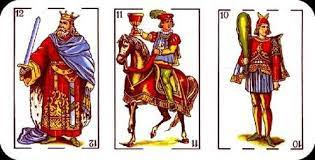
3 notes
·
View notes
Video
youtube
A beautiful song with a very genuine sound to it: Balansiya by Xavi Sarrià feat. Sandra Monfort, Rafel Arnal and Pep Gimeno “Botifarra”. “Balansiya” was the Arabic name for València.
This song mixes modern music with traditional Valencian music, and lyrics that talk about Valencian history. In this album, Xavi Sarrià talks about the heritage in Valencian culture (mostly in music) that was inherited from the Moorish people, who lived in large numbers in the Valencian Country and the south of Catalonia. In the year 1609, the Hispanic monarchy released a decree by which all Moorish people had to either convert to Christianity or leave. By that time, one third (!!) of the population of the Kingdom of Valencia was Moorish, so as a result it lost a huge amount of population, but many others stayed and hid among the Christians.
The culture of the Valencian Country and the south of Catalonia was already a mix of Moorish and Christian elements back then, and it has continued to be so until nowadays. This is most noticeable in traditional music, which has similarities with the traditional music of Northern Africa.
Here are the original lyrics in Valencian-Catalan and the translation to English:
Una alqueria, estreles i flors
abraça l’aurora un país de cançons
els joves dansen, la lluna ha mudat
no plores mare que el cel està albat
ha mort la innocència, en l’han arrancat
ja no hem de mentir per dir la veritat
la nostra alegria no ens la dona el vi
és l’emoció pura que ens batega al pit
A farmhouse, stars and flowers
a country of songs hugs the dawn
young people dance, the moon has been changed
don’t cry, mother, for the sky is light*
innocence has died, it has been stripped from us
we no longer have to lie in order to tell the truth
it’s not wine that gives us this joy
but the pure emotion that beats in our chest
La teua presència és com una oració
pregue morir si no visc no amb amor
tot l’univers està dins de tu
naveguen les barques com rajos de llum
pels oceans d’aigües sensorials al centre de tot on brolla qui soc
un camp magnètic sense coordenades
melodies nues de cançons sagrades
Your presence is like a prayer
I pray to die if I don’t live with love
the whole universe is inside you
the boats sail like rays of light
on the oceans of sensorial waters
in the centre of everything where who I am springs
a magnetic field without coordinates
naked melodies of holy songs
Palmes, postisses, guitarra i dolor
no et posem cara però et sentim al cor
gemecs sense esquema, art de resistència,
veus esguerrades d’exili interior
negra és l’esperança que es perd però se sent
verda és la mort que no vol fer el dol
ara ho entenc i no puc callar
se m’eriça la pell quan t’escolte cantar
Handclapping, castanets, guitars and pain
we don’t know your face but we feel you in our heart
groans without plan, resistance art,
broken voices of interior exile
the hope that is lost but can be felt is black
the death that doesn’t want to mourn is green
I understand it now and I can’t be quiet
I get goosebumps when I hear you sing
Una sandinga, una seguidilla
una malaguenya, una granaïna
la llavor germina, plora i s’extasia
quan s’obri en canal la nostra ferida
redades, presons, expulsions i matances
no han pogut callar l’emoció amb què cantes
et perseguiren però tu et camuflares
prenyares per sempre les nostres entranyes
A sandinga, a seguidilla
a malaguenya, a granaïna [styles of traditional songs]
the seed sprouts, cries and goes into raptures
when our wound opens.
Raids, prisons, expelling and slaughters
have not been able to make quiet the emotion with which you sing
they persecuted you but you disguised yourself
impregnated forever our entrails
A les nits de l’alqueria, hi ha llaüts i guitarrons
pintant les penes d’alegria amb cançons de mil colors
Les cantarem tota la nit
no oblidarem que ens van ferir
que la música és la sang, la festa i la tradició del nostre País Valencià.
In the farmhouse’s nights, there are lutes and guitarrons [traditional instrument similar to an ukelele]
Painting the sorrows in happiness with songs of a thousand colours
We’ll sing them all night long
we won’t forget that we were wounded
that music is the blood, the festivity and the tradition of our Valencian Country.
A les nits de l’alqueria a la lluna de Balansiya. (x2)
In the farmhouse’s nights, at the moon of Balansiya. [“at the moon of València” is an expression in the Catalan language that we explained in this previous post]
A les nostres festes, seguirem cantant
amb la resiliència que vam heretar
canviaren les lletres per negar qui eren
i sobreviure a les seues fogueres
memòria amputada, versos mutilats
queda un dolor íntim que no hem oblidat
van cremar els llibres però guardem al pit
la biblioteca dels nostres sentits.
In our festivities, we’ll keep singing
with the resilience that we inherited
they changed the lyrics to deny who they were
and survive to their bonfires
amputated memory, mutilated verses
an intimate pain remains, which we have not forgotten
they burned the books but we keep in our chest
the library of our senses.
No parle d’altres, parle de nosaltres
les arrels profundes que ens van ocultar
negres, jueves, morisques, gitanes
filles prohibides de Balansiya
els teus melismes són recitacions
la pena perviu a les nostres cançons
et perseguiren però tu et camuflares
prenyares per sempre les nostres entranyes.
I don’t talk about others, I talk of ourselves
the deep roots that were hidden from us
black, Jewish, Moorish, Romani
forbidden daughters of Balansiya
your vocal runs are recitations
the sorrow lives on in our songs
they persecuted you but you disguised yourself
and impregnated forever our entrails
(Repeat chorus)
*I’m not sure of the translation of this line. “Està albat” could mean that it has light, that the sun has risen (“alba”=sunrise), but the word “albat” means a child that has died in its first days, before being baptised. “Albat” could also be a literary word to mean “white”.
#música#arts#xavi sarrià#pep gimeno botifarra#país valencià#valencian country#balansiya#història#history#world music#traditional music#folk music#music#song rec#al-andalus#al andalus#1600s
43 notes
·
View notes
Text
23 de juliol - Averia
Ja tenim l'anècdota del viatge. Feina feta.
Esmorzem per marxar al Serengeti i ens acomiadem del personal del Foresight Lodge, que son molt bona gent exceptuant l'amo, que es una mica fatxenda.
Una de les noies es diu Putamia, la pobre, i un altra Irene. El cuiner es fa dir George Washington i, tot i que també es una mica xulillo, es més simpàtic que l'amo.
Pugem al cotxe i anem a una benzinera a carregar els dos dipòsits que portem, uns 115 litres en total.
Havent pagat, i quan anem a pujar, un noi que passava per allà es fixa que el cotxe perd un líquid verd. El radiador te un poro.
L'Stanley obre el capó i li posa aigua i té verd. Si, té verd.
Sembla que la fuga ha parat i seguim, però en arribar al portal del Ngorongoro, per on hem de passar sí o sí, ja torna a perdre. Posem més aigua i seguim amb l'ai al cor. La intenció de l'Stanley es seguir fins a Seronera. Però a mitjà pujada el motor comença a treure fum. Hi posem tota l'aigua que portem i més que recollim al lavabos que hi ha al mirador.
L'Stanley ha trucat a la central i decidim tornar a Karatu al mecànic.
Arribem al "mecànic", que es un pati a l'aire lliure ple de xatarra. El mecànic no parla anglès. Desmunten el radiador i mentres tant anem al Lilac cafè amb un tuc-tuc, a pasar l'estona.
Cap a la 1:00, ve l'Stanley al cafè i ens diu que cal canviar el radiador. Ve un cotxe desde Arusha amb un radiador nou, però igual triga 2 o 3 hores. Decidim dinar al Lilac cafè i esperar.
Són les 4 de la tarda i encara som al cafè.
3 notes
·
View notes
Text
Tallarines amb salsa verda
INGREDIENTS:
Tallarines
Una cullerada d’alfàbrega
Una cullerada de cibulet
Una cullerada d’orenga
Una cullerada de julivert
Un all
Un grapadet de formatge parmesà en pols
Un grapadet de pinyons
Un raig d’oli d’oliva
Un raig d’aigua
Un xic de sal
PREPARACIÓ:
Posem l’olla al foc amb l’aigua i fem la pasta.
En un recipient posem les herbes, l’all sense el cor, els pinyons, el formatge, un xic de…

View On WordPress
#AIGUA#ALFABREGA#ALL#CIBULET#CUINA#FORMATGE#FORMATGE EN POLS#FORMATGE PARMESA#FRUITA SECA#JULIVERT#OLI#OLI D&039;OLIVA#ORENGA#PASTA ALIMENTÀRIA#PINYONS#PRIMERS PLATS#RECEPTA#SAL
0 notes
Photo

Brayden wren loony toons Marc Antony Thinking Pose
Me when I am thinking about a decision
1 note
·
View note
Text


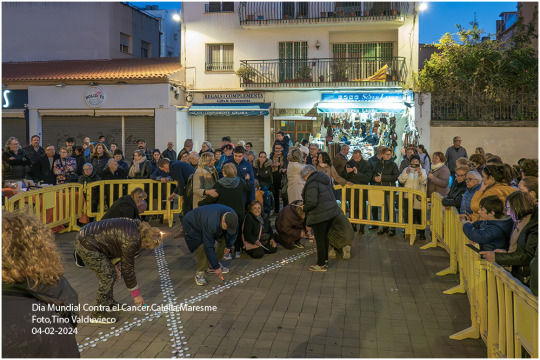
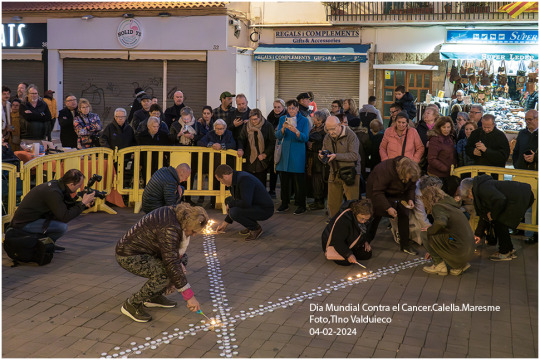

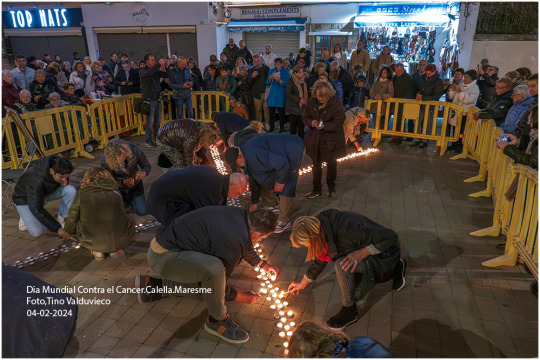
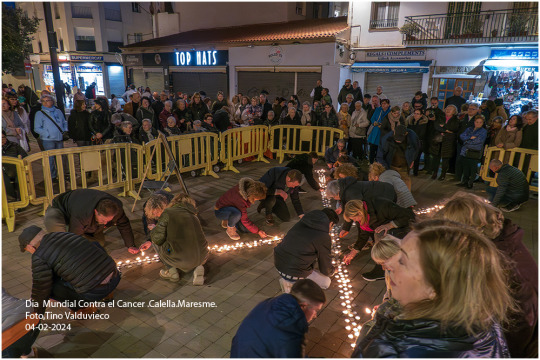
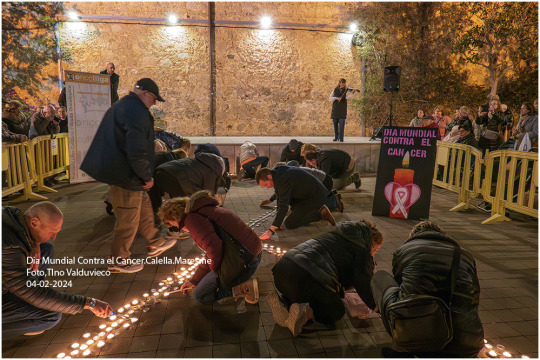

Acte de Posem Llum a la Vida .Una acció d'Oncolliga Calella amb motiu del Dia Mundial Contra el Càncer .
Calella.Maresme 04-02-2024
Foto,Tino Valduvieco
0 notes
Photo

Self me...now in Santa Maria al Bagno. Selfie in relax vicino al mare. . . . . . . . . . . . #viral #portrait #port #fashiononthesea #normaldresses #sexymanuel #look❤️ #styleblogger #poseme #posesforpictures #styleoftheday #happylife #modernmen #modernmenstreetstyle #menfashionstyle #menfashionpost #menfashiontips #selfie #portraitphotography (presso Santa Maria al Bagno) https://www.instagram.com/p/Co2CdDdKaJl/?igshid=NGJjMDIxMWI=
#viral#portrait#port#fashiononthesea#normaldresses#sexymanuel#look❤️#styleblogger#poseme#posesforpictures#styleoftheday#happylife#modernmen#modernmenstreetstyle#menfashionstyle#menfashionpost#menfashiontips#selfie#portraitphotography
0 notes
Video
youtube
Posem en dubte els somnis premonitoris. Com actua el nostre cervell a l'...
https://t.me/s/GpnOnAir
https://t.me/s/GpnOnAirOnRadio
https://gpnediciones.blogspot.com
https://gpnbarcelonaa.blogspot.com
https://t.me/s/GpnOnAir
https://t.me/s/GpnOnAirOnRadio
https://www.youtube.com/user/garnoromuloss/about
.
0 notes
Text
Restaurant El Cafe de Mura. Com fem el Fricandó de l'àvia Marina. Posem els moixernons en aigua freda per que es vagin hidratant
Restaurant El Cafe de Mura. Com fem el Fricandó de l'àvia Marina. Posem els moixernons en aigua freda per que es vagin hidratant.
0 notes
Text
Brasil dia 5: welcome to favela
Divendres 18 d'agost del 2023
Avui era un dia important, ens arriscàvem a ser segrestades en una favela que va trobar l'Eli un dia navegant per Internet des de la redacció del diari. Però ha sortit tot bé i la prova és que soc aquí escrivint aquestes paraules.
Ens hem llevat, un dia més, abans que sonés l'alarma. Ja no sé si és vici o jet lag. A les 7:32 ja estàvem totes dutxades i preparant l'esmorzar. Se'ns ha acabat el cafè, per la qual cosa hem sortit a comprar-ne dels d'emportar en una bakery moderna que hi ha al carrer Vinicius de Moraes. D'allà i amb els cafès (que avui ens han servit ràpid, no com el tonto d'ahir), ens hem dirigit a la platja d'Ipanema per fer-nos una foto de postureig, amb el pedrusco de fons del Pao de Azucar. És que aquesta foto la volíem fer el primer dia a l'arribar, però feia tan de núvol que qualsevo podria pensar que en comptes de Rio això és Blanes o Castelldefels. Bueno total, que ens hem fet la foto sota la mirada atenta dels primers maleantes del dia. Ens hem dirigit cap a la favela del Ranieri. Es tracta d'una favela especial, posem-hi context perquè si no, ens pesa massa la mala consciència... la típica síndrome que pateixen totes les persones blanques amb una mínima consciència de classe que viatgen a països en vies de desenvolupament (em refereixo per exemple a nosaltres anant al Brasil i concretament, a veure una favela). Hem conegut el projecte Morrinho (que després hem intuït que deu voler dir 'turó petit' perquè morro vol dir turó). Neix dins de la favela de Pereira Silva (el turó de la Peira per nosaltres). Fa uns anys, segons ens ha explicat el Ranieri, això era com el càrtel de Sinaloa: tiros, drogues i armes, segurament tos podrien ser simpatitzants del RCDE amb aquesta definició... xd és broma. Volaven els trets per la favela i era molt difícil la vida allà, ara sense conyes. Però cap a finals dels 90 va canviar la cosa. Primer perquè la policia va entrar-hi i es va carregar quatre dels líders narcos més xungos del moment, i després perquè el patriarca de la favela va decidir que aquest espai seria lliure de tiros (però no de drogues, que perduren fins avui) i que fins i tot s'obriria al turisme. Com? Doncs muntant-hi un alberg, una pousada que avui encara funciona. La situació va canviar fins al punt que avui és la favela més segura de Rio.
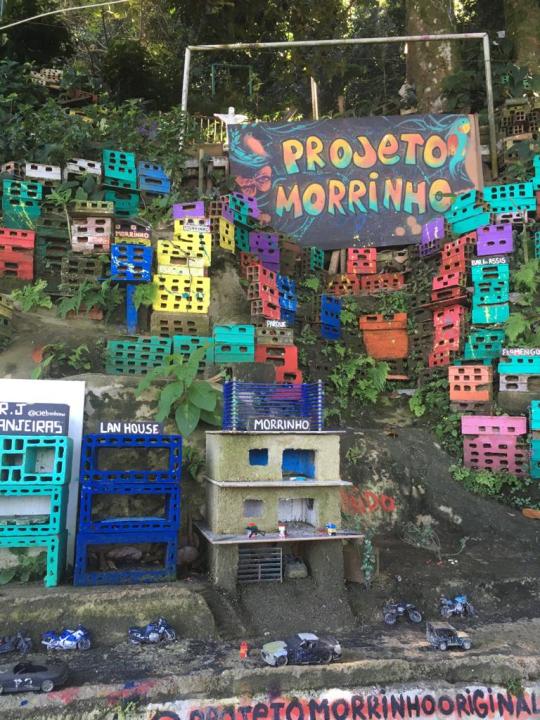
Feta l'explicació, ens hem presentat a la favela en Uber, primera contradicció assenyalada. només començar, l'Eli s'ha cascat un speech amb el Ranieri sobre els nostres privilegis i contradiccions a casa seva. Tant ell com la mediadora de la favela ens han dit que prou de tonteria i que estan encantats amb la nostra presència, perquè la visita de turises com nosaltres els suposa un important ingrés i som una veu al món exterior, per difondre el seu projecte.
El tour que ens ha fet per la favela ens ha semblat molt interessant i necessari, la veritat és que n'hem sortit satisfetes. La Clara i la Joana, que eren les més reticents, tampoc se n'han penedit quan hem acabat. No hem tingut por en cap moment, només quan uns gossos ens han bordat. La gent de la favela ens ha rebut molt bé, tot i que hauria de dir "els homes", perquè crec que només hem vist dues dones en tot el matí, i totes dues estaven treballant. La veritat és que recomanem a tothom que hagi de venir a Rio i que tingui certa sensibilitat, doncs que conegui el Projecte Morrinho. Teniu més informació a la web.

La segona contradicció del dia ha estat quan després de visitar la favela ens hem comprat souvenirs de Rio i tal, i hem pagat més diners per un estampat que per la visita que ens ha fet el Ranieri. bueno, això l'Eli, si som sinceres... Ara, el souvenir està guapissim.
Hem baixat a peu fins les Escaleiras de Selarón, les de les rajoles. Avui per fi les hem vist a color! Ah, i he vist quatre gats en tot el matí, dels quals un bebé negre preciós a les escales però amb una important infecció ocilar. Espero que el portin al veterinari i visqui molts anys.

Hem dinat en un restaurant d'allà al costat, uns plats ben copiosos que hem rematat amb cafès, avui sorprenentment tota la restauració s'ha posat d'acord per posar fi al seu retràs i ens han servit ràpid. I bueno, la idea era passar per casa i descansar però com sempre se'ns ha tirat el temps a sobre, així que hem fet via cap al Pao de Azucar o Terrón de azúcar com m'agrada dir-li a mi.
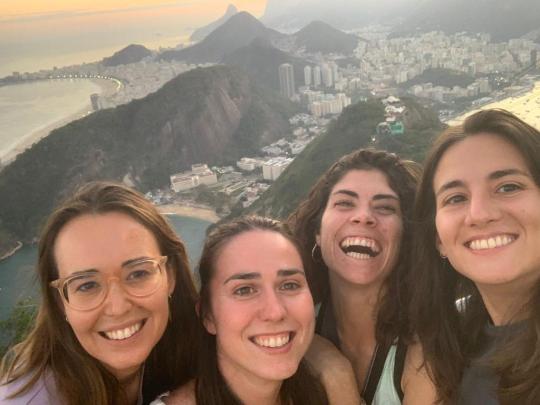
32 pavos per pujar als 2 pedruscos, macho! Però les vistes molaven molt, llàstima que de tanta gent que hi havia fent fotos no es veia una puta merda. Es veien més mans i mòbils que el sol rogent. Una mica fail. La Clara no ha pujat fins al terrón perquè li ha entrat el cangüelo, però hem fet moltes fotos! Ah, increïble: a que no sabeu a qui ens hem trobat a dalt? Als balears que parlaven en castellà!! D'allà hem pillat un altre Uber cap a Copacabana, on hem anat a fer una birra (unes quantes) en un chiringuito de platja. De camí hem posat la Mushkaa a Spotify, Diabla, i el taxista de l'Uber se l'ha guardat a favoritos.
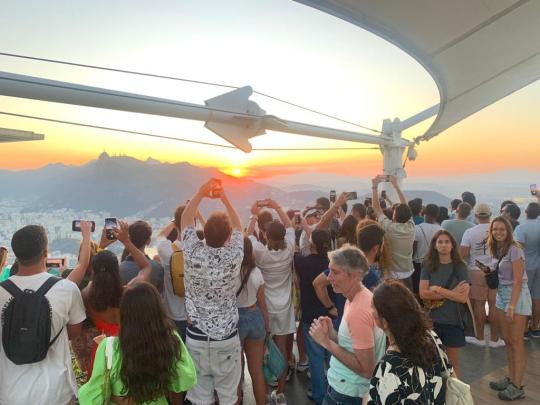
Post birra hem anat cap a casa i hem sopat gairebé després de destrossar la cuina per culpa del cony de cafetera, que deixa anar el poso del cafè i ho taca tot. Demà marxem a Ilha Grande a les 7.45h així que toca apagar el llum i dormir. A la Joana li molesta la llum, és que ella dorm al sofà (i cada dia li fa més mal l'esquena).
PD. Hem descobert que hi ha rentaplats després de quatre dia rentant-los a mà.
PD 2. L'Eli ha preguntat al porter de la finca on ens allotgem si porta pistola. Li ha explicat una truculenta història que ha acabat amb una abraçada inesperada i incòmoda per ella i amb l'Eli abandonant l'espai cames ajudeu-me. Aquesta gent està a anys llum dels punts lila i els protocols contra l'assatjament, ho dic per ell i per tots els que ens hem trobat fins avui.

0 notes
Text
20 de juliol - Hadzabe i Detonga
A les 7:00 del matí, ja esmorzats, marxem direcció al llac Eyasi. Vaig quedar ja fa uns mesos amb el Gorjo, que es el guía / contacte amb els Hadzabe. L'Stanley el coneix, aquí tots es coneixen.
Els Hadzabe es una tribu dels últims que queden al món com a caçadors-recolectors. No conreuen ni tenen ramats, només cacen (els homes) i recolecten (les dones).
La carretera deixa anar molta pols però és una mica millor que la d'ahir.
Trobem el Gorjo, que ens espera al punt de control, ens saludem i puja al cotxe. Es molt simpàtic i porta unes rastes que li queden de conya.
Seguim endins per una carretera més difícil fins que arribem a una esplanada amb un arbre on estan els Hadzabe esperant. Fem les presentacions xocant els punys i un d'ells, força jove, ens explica coses que el Gorjo va traduint. Ens ensenya fletxes i ens explica per a que serveix cadascuna. Una pels monos, un altre per ocells, un altre pels Pumba, etc. Ho explica rient i fent una mica el tonto. El llenguatge que fan servir es molt similar al dels bosquimans de Namíbia, amb sons fets amb la llengua sonant "clec". Es quasi impossible de reproduir.
Després el Gorjo ens diu que anem a caçar. Marxem amb tres d'ells per l'estepa, i els anem seguint. Ells van a la seva i molt simpàtics no semblen. Un es un nen d'uns 10 anys.
Anem caminant buscant algo per caçar fins que el nen, uns 20 minuts després, arriba amb un ocellet de color groc que ha caçat.
Se'l penja al coll i anem fins una ombra on fan foc amb un pal, hi posen l'ocellet al damunt i se'l jalen amb quasi totes les plumes i tot. Apa, ja han esmorzat. Ens n'han ofert però hem declinat amablement.
Havent-se fotut el pobre ocell, es lien un porret de marihuana i se'l fumen. El Gorjo diu que tot el dia fumen herba, tant homes com dones.
Tornem a l'esplanada on hi ha les dones assegudes al terra i unes quantes criatures petites. Les fotografiem (ens fa cosa però és deixen). Una nena petita porta un vestit de princesa com la de Frozen que ves a saber d'on l'han tret. La Joana es fixa amb una altra nena d'uns dos o tres anys, li pregunta com es diu però no entenem que diu, fins que el Gorjo ens diu que ha dit "María" i es posa a riure. Diu que alguns noms els treuen dels turistes.
La nena li pregunta al Gorjo si ell va amb els homes blancs (que som nosaltres) i desprès li diu que ella també té una persona blanca a casa (es una nina, entenem). Ens posem a riure i ens mira com extranyada. La Joana li dóna una samarreta, l'hi posa i li queda com si fos un vestit. La nena sembla contenta, però la mare ni fu ni fa.
Després s'ajunten tots i fan un ball. Per acabar, passem per una zona on tenen una mica d'artesania i els hi comprem algunes cosetes. Una de les noies es guapíssima. Paguem amb dòlars i el Gorjo s'encarrega d'explicar quin valor tenen els bitllets i de comptar-los.
Després els canviaran per Shillings (moneda de Tanzania) als conductors dels turistes.
Ens acomiadem i el Gorjo ens porta ara a veure els Detonga, que son ferrers. En arribar ens esperen unes cinc o sis dones més elegants i netes que les Hadzabe, i més guapes. Saludem dient "Seiyu" i donant la mà a tothom, literalment.
Hi ha tres nens petits, un es diu "Diners" i l'altra "Pneumàtics". Tal qual.
Entrem a una cabana i ens pregunten coses com ara quantes vaques vaig pagar per la meva dona, si tenía més dones, quants fills i si erem tots quatre la mateixa família o erem dues families.
Després es posen a batre blat de moro per fer farina amb una pedra i fan que la Joana i la Montse ho facin també. Tot això, cantant i donant palmades. Qualsevol cosa que diuen o diem ho acaben aplaudint.
Ens miren constantment i nosaltres les mirem constantment. El Manel els ensenya fotos del Pol i l'Aina i riuen encantades.
Després vesteixen la Joana i la Montse amb vestits i joies i ens fem fotos a la sortida.
A continuació anem a una altra zona on hi ha els homes fent puntes de fletxa. Agafen ferralla que han trobat (canonades velles, aixetes, candaus, etc) i ho fonen allà mateix. Amb un clau llarg fan una punta de fletxa en 10 minuts. Aquests puntes després les compren els Hadzabe per caçar, amb els diners que fan aguantant els turistes.
Comprem algunes coses més pagant més diners del que valen però fent-ho a gust. Es el que cal fer.
Finalment ens acomiadem dient "ezebé" i anem al càmping del Gorjo (es el propietari) i dinem allà el picnic. El Gorjo ha portat polenta, que es típic, i vedella feta a trossos que està boníssima. Ens la mengem amb les mans, com déu mana.
Acabem fent un cafè molt bo a Karatu, al Lilac cafè.
3 notes
·
View notes
